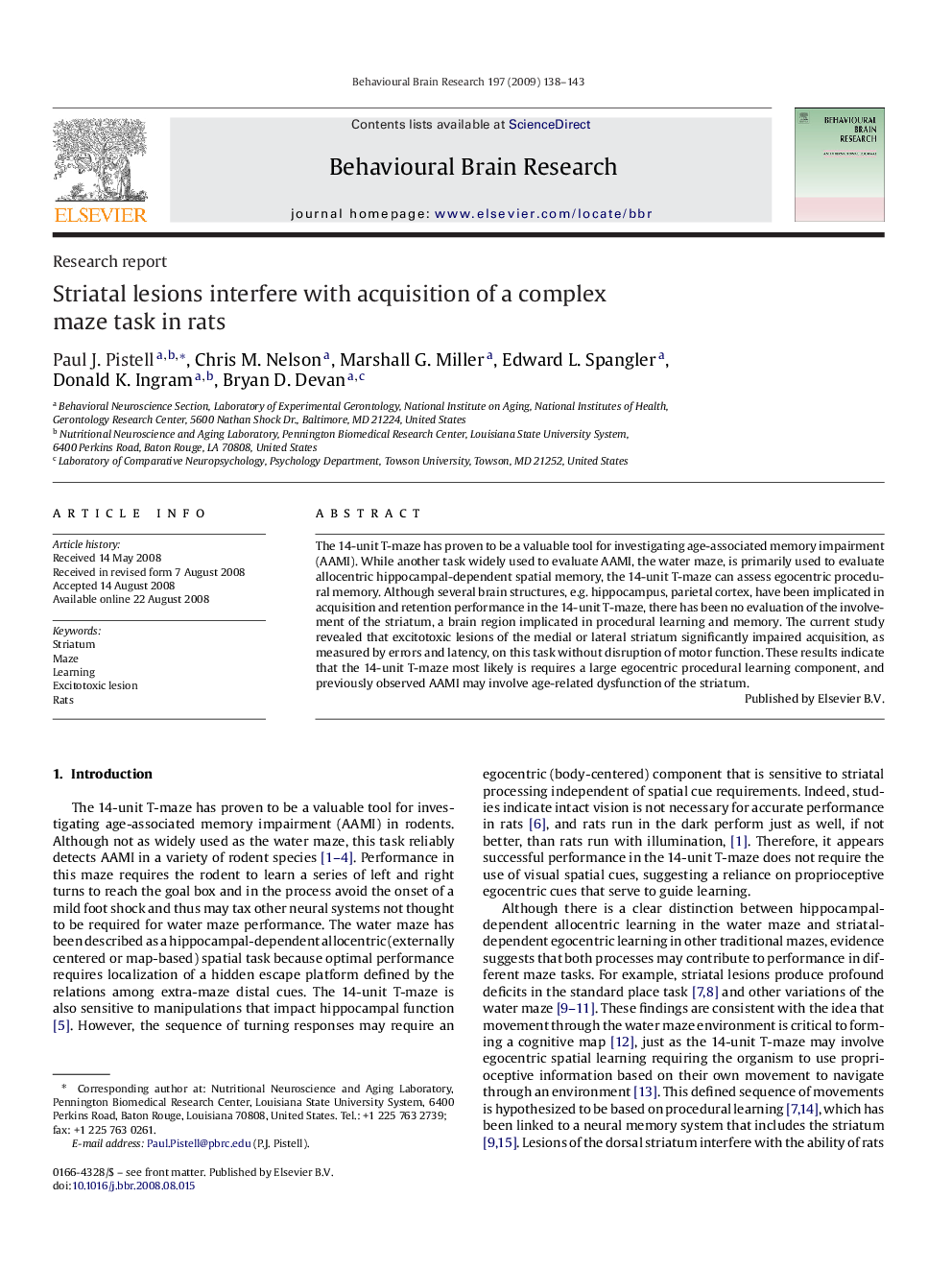| Article ID | Journal | Published Year | Pages | File Type |
|---|---|---|---|---|
| 4314874 | Behavioural Brain Research | 2009 | 6 Pages |
The 14-unit T-maze has proven to be a valuable tool for investigating age-associated memory impairment (AAMI). While another task widely used to evaluate AAMI, the water maze, is primarily used to evaluate allocentric hippocampal-dependent spatial memory, the 14-unit T-maze can assess egocentric procedural memory. Although several brain structures, e.g. hippocampus, parietal cortex, have been implicated in acquisition and retention performance in the 14-unit T-maze, there has been no evaluation of the involvement of the striatum, a brain region implicated in procedural learning and memory. The current study revealed that excitotoxic lesions of the medial or lateral striatum significantly impaired acquisition, as measured by errors and latency, on this task without disruption of motor function. These results indicate that the 14-unit T-maze most likely is requires a large egocentric procedural learning component, and previously observed AAMI may involve age-related dysfunction of the striatum.
